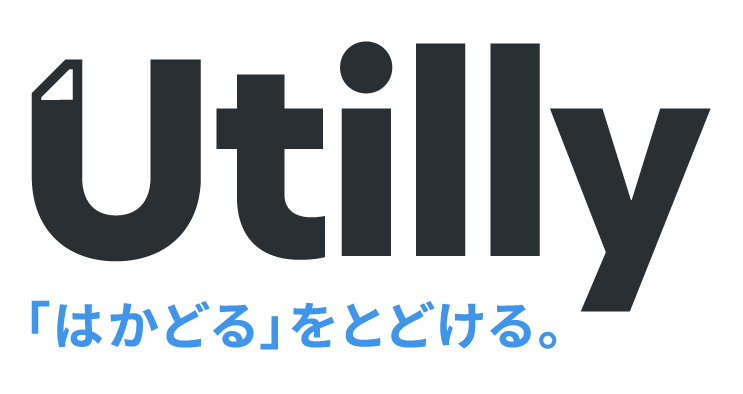This post is also available in: 日本語
Introduction

In this article, we summarize the terms that are frequently used in digital marketing.
I think you have heard of this term when you are doing marketing.
Free, Effective Marketing Tool
If you’re ready to start marketing, Utility offers 10 free marketing tools.
Please take a look at this if you are interested.
Practical Digital Marketing Glossary
Let’s take a look at the terms used in digital marketing!
SEO
SEO stands for Search Engine Optimization and is a term used by Google, Yahoo! to make your site easier to find.
SEO aims to make it easier for your site’s content to be rated by Google’s search engines by expanding your content and organizing your internal links.
By placing the right quality and quantity of content in the right location on your site, you can tailor it to your search needs, which in turn increases search traffic to your site.
ASO
ASO stands for App Search Optimization.
Mainly in the App Store, Google Play and other app markets
to make it better.
We aim to increase the number of app installs by keeping the search share in the app market high by optimizing the app title, description and keywords.
SEM
SEM stands for Search Engine Marketing.
In a broad sense, it refers to search engine marketing including SEO, but in general, it refers to marketing related to search engines such as Google Ads and Yahoo! It often refers to search-based advertising such as sponsored search.
Search advertising is a method to display advertisements in the user’s search results. Search for users In general, the self-serve style is to purchase KW by auction.
CTR
CTR stands for Click Through Rate. This is probably the most common term in marketing. In general, CTR refers to the rate at which a target (advertising) is clicked relative to the number of pages displayed.
The formula is:.
For example, you can say that high CTR ad materials are valuable in advertising.
CPC
CPC stands for Cost Per Click. It means the cost per click.
This term appears mainly in advertising, but it determines whether the cost-performance of a click is good or bad by calculating how much the click is for the cost of the ad.
The formula for CPC is:.
For example, if you spend 1,000 yen and get 10 clicks, CPC will be 100 yen.
CPA
CPA stands for Cost Per Acquisition. A CPA is usually a measure of how much you’ve earned in terms of cost.
The formula for CPA is:.
For example, if you spend 1,000 yen and get 1 user out of 10 clicks, CPA is 100 yen.
CV
CV stands for conversion. It refers to the actual number obtained.
For example, if you get 10, you say 10 CVs.
CVR
CVR stands for conversion rate and is also called conversion rate.
For example, if 10 clicks are received from an ad and 1 of them is obtained, it can be expressed as CVR 10%.
CPI
CPI stands for Cost Per Install (cost per installation). It refers to the acquisition cost per application installation.
PV
PV is the acronym for page view. The number of times the page has been displayed.
10 PV is equivalent to 10 page views.
UU
UU stands for Unique User. Refers to each user. For example, 1 user viewing 10 pages is represented as 10 PVs in a 1U.
User analysis, such as PV and UU, is typically done with a tool called Google Analytics.
In Utilities, you’ll find entries about Google Analytics. Please take a look if you are interested.
MAU
MAU stands for Monthly Active Users. Refers to monthly active users.
The definition of active varies from service to service, but typically refers to users who log in more than once a month.
DAU is a daily active user and WAU is a weekly active user, and they are often expressed in each unit period.
Owned media
The term “own media” refers to media owned by the company. For example, a blog owned by a company is called own media.
We refer to our own holdings as “own media” and “ad paid media,” and collectively refer to the three as “triple media.”.
LTV
LTV stands for Life Time Value. Lifetime value is, as the name suggests, the lifetime value of the user.
It’s an indicator of how many times a user will use the service over and over, and how much money they will lose. Basically, you have to raise LTV.
LTV is calculated as follows:. The calculation method varies depending on the business model of the service.
ROAS
ROAS stands for Return Of Ads Spend. It is used to calculate how much return you get when you submit an advertisement. For example, if a user who submitted a 1 million yen advertisement earned 300,000 yen for 3 months, it is expressed as 3 months ROAS 30%.
Because ROAS does not pay until it exceeds 100%, you must specify whether it will pay in the first place and how long it will take to pay.
ROMI
ROI stands for Return Of Marketing Invest. It is expressed as marketing investment return. This is the return on all marketing costs, including advertising, tools and research.
AB test
As its name suggests, the AB test determines which pattern is more optimal by examining the A and B patterns for a given measure.
The AB test covers a wide range of topics such as advertising, UI, site layout and copying.
U-TILLY has an article on Google Optimization, Google’s AB testing tool. Please refer to it if you like.
CRO
CRO stands for Conversion Rate Optimization.
This is a method to optimize conversion rate by the AB test described above.
CRM
CRM stands for Customer Relationship Management and refers to the overall approach to managing customer relationships. For example, it is a general communication for existing users such as sending a campaign mail for returning to the service to users who have not used the service for a month or sending a coupon on a user’s birthday.
UOB
The UOB stands for User Onboarding and refers to the action that the entry user takes to get to the intended use of the service. For example, it refers to the overall process of improving tutorials in games and reducing the stress of entering personal information in financial services.
Retention
Retention is a measure of user continuity. Retention rate refers to the continuity rate.
For example, it could be a continuous login or an expression that appears in an activity related to a user’s continuity indicator.
Engagement Rate
Engagement Rate is generally the rate of user reaction.
Especially, it is often used in social media.
For example, you can post to an account with 100 followers! The engagement rate is often expressed as 10% when there are 10 items.
Engagement generally refers to all of your actions, so it’s good! It often refers to the sum of RT, comments, etc.
Utilities also has a few tools you can use to increase your social networking engagement.
Social Dog is a free Twitter analytics tool.
Autolikes is twitter and Instagram auto-action tool.
Retargeting
Retargeting is a technique in which tags are embedded in a site and ads are delivered only to users who visit the site.
Similar delivery
Similar delivery is the delivery of data for a group of users to other users with similar attributes.
DSP
DSP stands for Demand Side Platform. It refers to an advertising network where media ad space can be purchased programmatically through automatic bidding.
In general, an ad network refers to the ad network itself, whereas a DSP has its own algorithm and is a service to purchase through automatic bidding.
Typically, DSPs are connected to a service called SSPs (Supply Side Platform) that centrally manages media inventory and can display advertisements against that inventory.
Affiliates
Affiliates are performance-based advertising.
Affiliates typically pay media a fixed fee when a promised performance condition occurs, regardless of how many times the ad is displayed or how many times it is clicked.
As direct affiliate contracts between advertisers and media impose a huge burden, ASP (affiliate service provider) mediates between advertisers and media while providing a measurement environment.
If you know more about Affiliates, please check this article.
in-feed advertising
Infeed ads are ads that appear in a feed type service such as Timeline.
For example, ads on Facebook and Twitter’s Timeline are classified as in-feed ads.
ARPU
ARPU stands for Average Revenue per Users and refers to the average customer unit price.
We calculate the average unit price of all customers, including both profitable and non profitable customers.
ARPPU
Like ARPU, it’s ARPPU.
ARPPU stands for Average Revenue Per Paid Users and is the average unit price of the paid users who are generating revenue.
And finally,
There are a lot of terms in marketing. In this entry, the terms actually used in the digital marketing field are listed at once. If you find a word you don’t know what it means, please try to reverse it.


